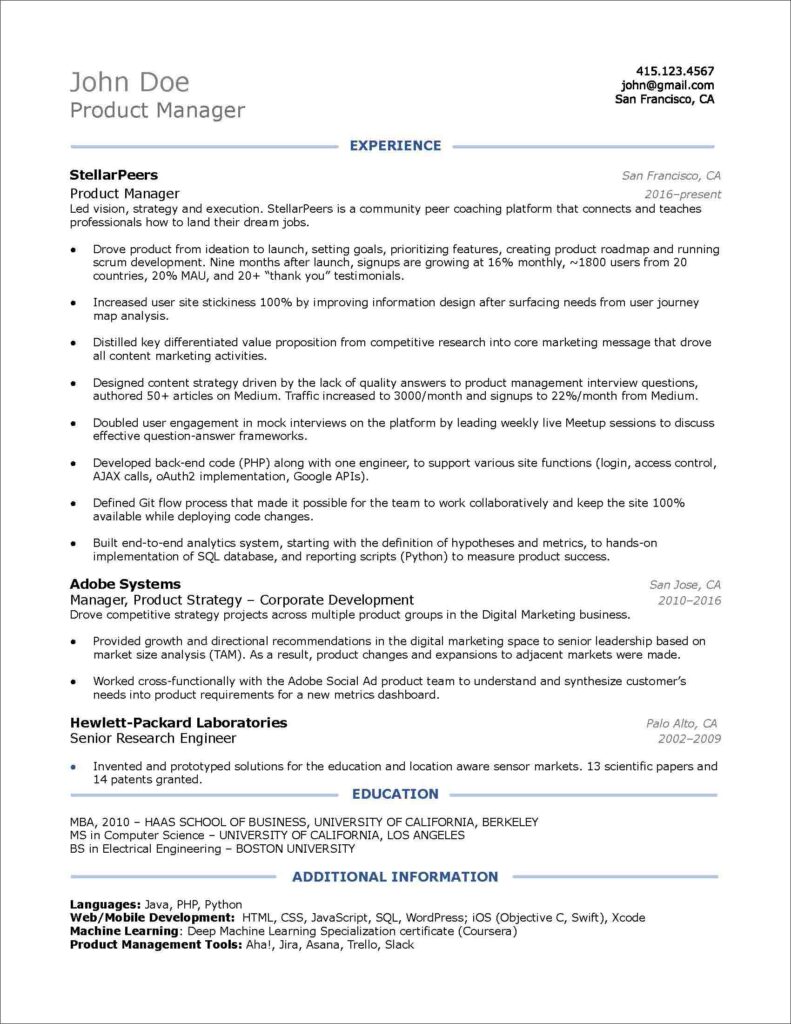Resume Formatting Tips

Design
Recruiters spend only six seconds reviewing a resume. Therefore, it is crucial to design a resume that makes it easier for recruiters to quickly scan and conclude that you are the candidate to interview.
There are three things to keep in mind when designing your resume:
- Visual Hierarchy
- Line Spacing
- Fonts
Visual Hierarchy
Visual hierarchy is a technique that directs the reader’s attention through your resume, highlighting the most significant information. You must prioritize your resume content by importance to establish a visual hierarchy. Identify the order in which you want the recruiter to view the information. Give the most critical content more prominence and the main focal point for the reader. The most effective way to establish a visual hierarchy when crafting a resume is through layout and contrast.
Layout
Arrange your resume by placing the most critical information, such as your recent and relevant experiences, at the top while placing less important content towards the bottom. Group similar information together to create a clear distinction between each section.
Contrast
Contrast establishes a hierarchy by creating emphasis and calling attention to important information. You can create visual differences by using more than one font, using different font weights and styles, varying sizes, and applying color. Size helps with hierarchy because bigger objects communicate greater importance than smaller items. Color creates visual emphasis by evoking emotion, expressing a personality, breaking up the monotony of the white page, and drawing the eye around your resume.
It is important to remember that all elements cannot be visually equal. The design will lack hierarchy if all elements share equal importance or emphasis. And the recruiter will not be able to determine the most crucial information from the least important. If there is too much contrast and the elements compete, the resume will not provide a starting point for the recruiter. To avoid this, use a maximum of three cues to signal each hierarchy level.
Some examples of cues:
- Orientation
- Line spacing
- Indenting
- Alignment
- Emphasizing a word or phrase
- Using more than one font
- Color
- Font sizes
- Font weights and styles
- All caps
- Symbols
Line Spacing
Line spacing, also called leading, is the space between lines of text. On resumes, the tendency is to decrease leading because it allows for more text on a page. Use caution when reducing the space between lines. If the leading is too tight, lines of text can overlap, ascenders and descenders collide, copy becomes denser in color, which is tougher to read, and lines start to blend together, causing the reader to jump to the next line without finishing the first line. Just remember, it is a balance. Adding additional space between lines improves readability; however, too much space affects readability.
Fonts
There are a plethora of fonts to choose from. Try to resist the urge to use too many fonts and font styles. If you use multiple fonts, it is best to stick with two. Using one font family will help you keep a consistent look and feel. Use the regular font style for body copy, italics to highlight keywords for phrases, and bold for headings. Using more than two font families creates visual noise and affects visual hierarchy. Picking one font for your body copy and choosing a second font for headlines will create a nice contrast.
Things to keep in mind regarding fonts:
- Use no more than two fonts.
- Fonts have meaning.
- San serif fonts are generally easier to read.
- Choose an extensive font family with multiple styles and weights (sometimes Bold is too bold, and Semi Bold works better).
Example
Below is a visual example of applying these tips to a resume.

Summary
Visual hierarchy, line spacing, and fonts used effectively in your resume design will help recruiters quickly scan and conclude that you are the candidate to interview.